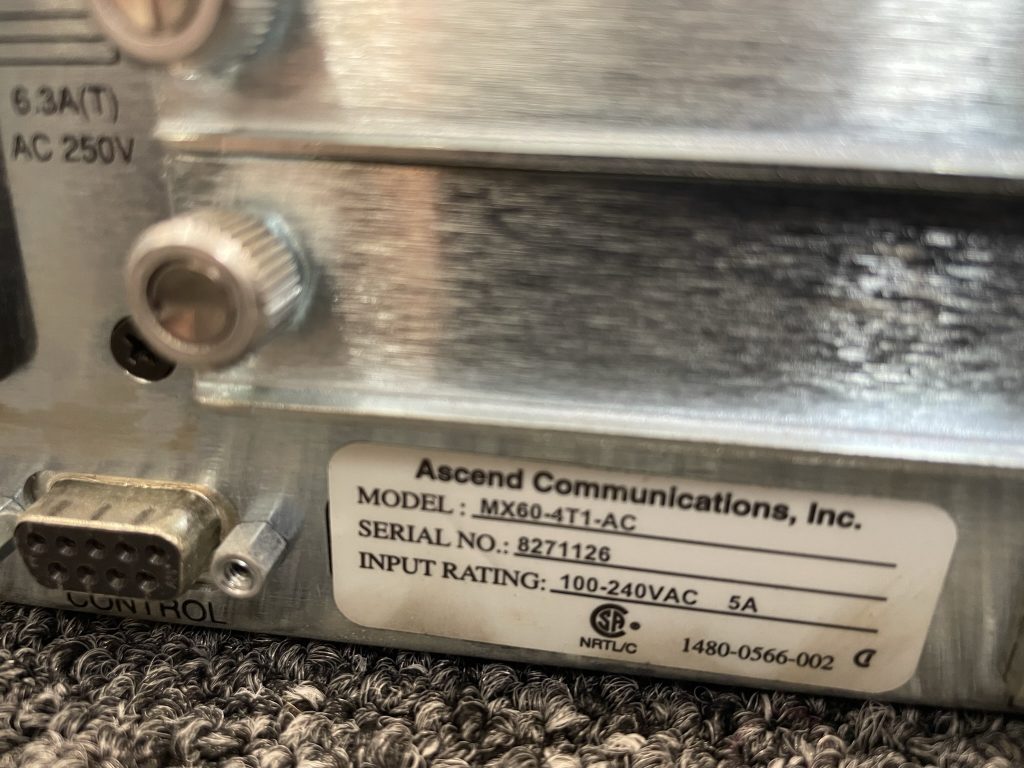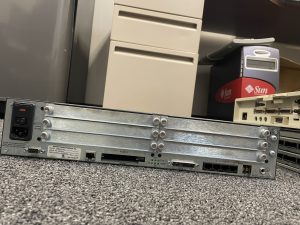I’ve been working on the retro computing new environment for the last few months, which has consisted of many different ideas of technologies from mid-1990s to early 2000s. Although we’re looking at a timespan of much less than 10 years, the technologies I want to include are quite vast, running from amateur BBS dial-up connections to commercial ISPs with high volume dialup capacity.
It wasn’t until this week that I realized I haven’t done any telephony work yet in this retro computing endeavor. I’ve been active — tinkering with my BBS, connecting to other BBSes through telnet, and setting up my Windows XP desktop , but all of that has been over the Internet and LAN. When we fired up the Packard Bell Platinum 2220, the need for dialup became apparent. This Packard Bell system does not have an Ethernet card and its life totally revolved around Internet access from Earthlink dial-up Internet. Opening Internet Explorer 5, or Netscape Navigator 3 prompted Windows to open the Dial-Up Networking and dial out to Mindspring.
When I noticed this, my first thought was “Dial-up Internet – that’s easy” – no need to add an Ethernet card. But with no specific plan in mind, I’m now brainstorming to figure out how to pull this off quickly. This blog post is my attempt at brainstorming and formulating a plan:
- dialup over voip seems commonly done at up to 14.4K, which is ok- based on reddit posts
- The domain name of this blog (xyplex.net) was chosen because I want to use a Xyplex terminal access server and haven’t yet done so.
- I have experience with VoIP systems (Asterisk / FreePBX)
- I have experience with ISP dialin systems – primarily with US Robotics / 3COM Total Control chassis which would take multiple T1 PRI lines to terminate lots of 56k dialup. In the pinnacle of my commercial dial-up ISP work, I also used Carrier Access MUX to aggregate multiple of those T1 PRI lines on to a high capacity DS3 circuit.
- I have deep experience with all of the plumbing to make this work — PPP, DNS, RADIUS, networking. While previously unconventional, my new dial-up ISP will use NAT and issue private IPs to the clients.

So, what to do? My first thought was to start with a Cisco IAD2431 that I’ve worked with before to provide 8 or 16 FXS analog lines from a SIP provider. That would give me plenty of analog lines to use for all intended purposes — BBS inbound modem lines, outbound connections, and analog ISP stuff. However, the IAD24xx would be drawing 60+ watts, possibly overkill for the low actual volume needed.
To just get something started, I looked at ATA options online – I really don’t have any first-hand experience yet with VoIP ATAs. After reading for awhile, I ordered the Cisco Linksys SPA2102 which seems to be pretty kickass for an ATA. It is cheap, supports relatively new standards including T.38, and provides 2x FXS (analog lines). So for a minimum deployment, I can have one analog line for the dial-up client, and one analog line for the ISP inbound modem.
How should that ISP modem work? Great question. I feel like this should be easy and I probably read many HOWTO guides back in the day about how to setup Linux to answer a modem with PPP using /etc/inittab. One of my favorite pages to browse back in the 1990s was amazing.com, a guy named David had an ISP howto guide / FAQ that covered various technical issues of how to create and run an ISP from scratch. I am going to pull it now for starting points.
Xyplex: The unit I bought is a Xyplex MAXServer 8 MX-1608b-004 – I will do some future work on this.
Additionally, I have one piece of equipment from my 1990s history:


This is an Ascend MX60 terminal server, apparently setup to handle 4x T1 (PRI) lines of dialup.
